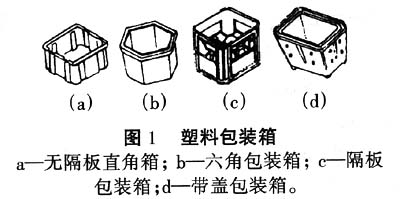Plastic containers are mainly designed according to packaging requirements. Because plastics have their own special physical and mechanical properties, they must fully display their performance advantages, avoid or compensate for their shortcomings. Under the premise of meeting the requirements of use, the shape of the container should be as simple as possible to simplify the mold structure and conform to the molding. Process characteristics. The main contents of the structural design of the plastic container include the shape, size, wall thickness, and inclination of the container, as well as the reinforcement of the rib bearing surface, round corners, threads, inserts, words, and trademarks.
First, the common types of plastic packaging containers
1. Box packing
Plastic packaging boxes are generally made of thermoplastics, and the walls are often reinforced with reinforcing ribs. The shape can be rectangular or other shapes, and can also be provided with a box cover or partition, which is widely used in the turnover of food packaging products such as food, beverages, beer, etc. or in the factory transportation of small products, semi-finished products, accessory products and parts. Storage and so on. The common box is shown in Figure 1.

2. Disc packaging
Disc packaging containers generally have stiffeners, commonly made by die casting or extrusion. It is mainly used for the storage and transportation of small, easily deformable, afraid of extrusion products, such as cakes, fruits, eggs and small items in the factory, as shown in Figure 2.

3. Plastic packaging containers for sale
Plastic packaging containers that are directly used to sell goods are commonly used in cans, barrels, and cassettes. They are generally manufactured by injection molding, compression molding, and die casting, and are mostly disposable. Its shape is shown in Figure 3.

(to be continued)